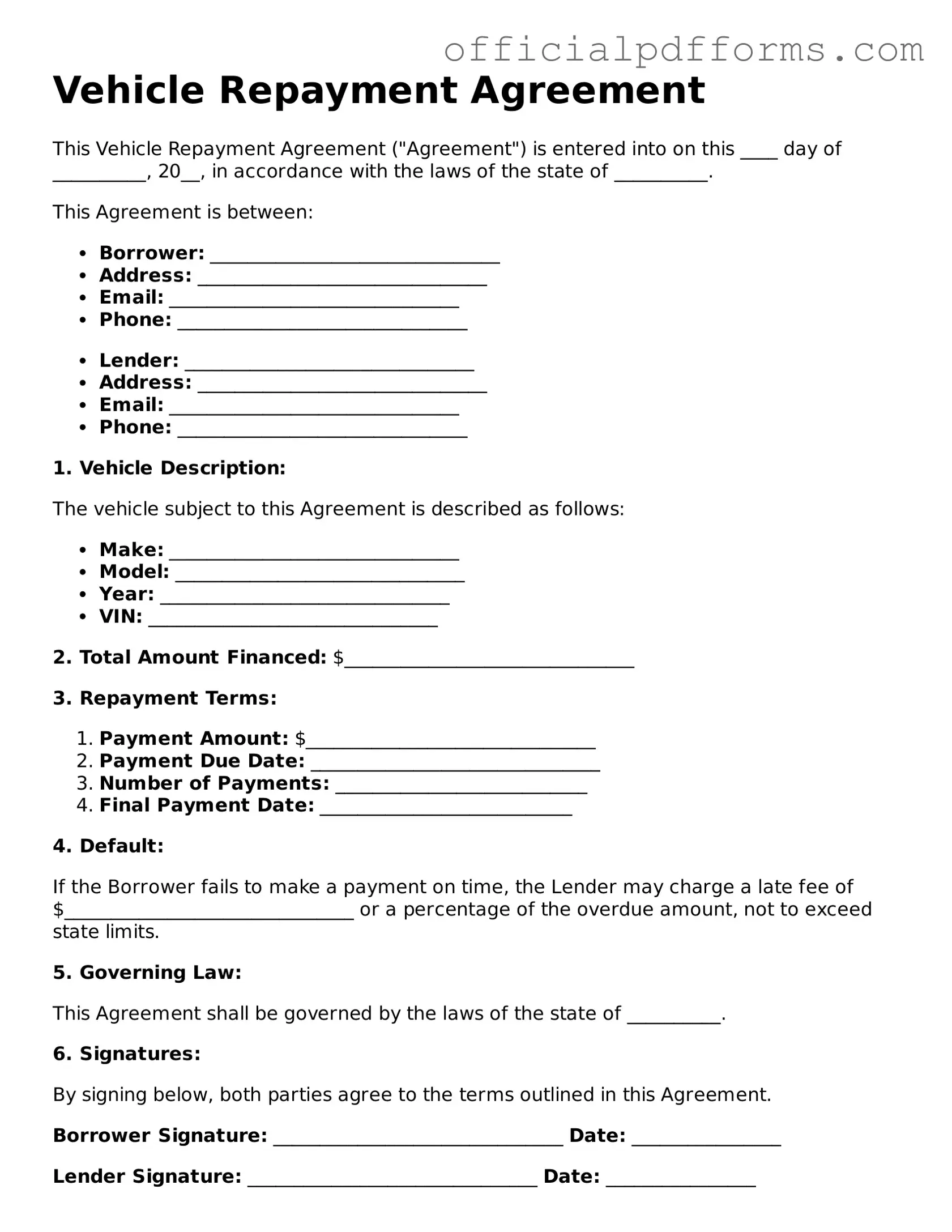What is a Vehicle Repayment Agreement?
A Vehicle Repayment Agreement is a legal document that outlines the terms under which a borrower agrees to repay a loan taken out to purchase a vehicle. This agreement details the repayment schedule, interest rates, and any penalties for late payments. It serves to protect both the lender and the borrower by clearly defining the expectations and responsibilities of each party.
Who needs to sign the Vehicle Repayment Agreement?
Typically, both the borrower and the lender must sign the Vehicle Repayment Agreement. The borrower is usually the individual or entity purchasing the vehicle, while the lender is often a financial institution or dealership providing the loan. In some cases, a co-signer may also be required, particularly if the borrower has a limited credit history.
The Vehicle Repayment Agreement generally includes:
-
The names and contact information of the borrower and lender.
-
A description of the vehicle, including its make, model, year, and Vehicle Identification Number (VIN).
-
The total loan amount and the interest rate.
-
The repayment schedule, including the number of payments and due dates.
-
Any fees associated with the loan, such as late payment penalties.
-
Terms regarding default and repossession of the vehicle.
How is the repayment schedule structured?
The repayment schedule is typically structured based on the loan amount and interest rate. Borrowers may choose between different repayment plans, such as monthly or bi-weekly payments. Each payment will generally include both principal and interest, allowing borrowers to gradually pay down the loan over time. The specific terms will be outlined in the agreement.
What happens if I miss a payment?
If a borrower misses a payment, the lender may impose penalties as specified in the Vehicle Repayment Agreement. These penalties can include late fees and an increase in the interest rate. Continued missed payments can lead to default, which may result in the lender repossessing the vehicle. It is crucial for borrowers to communicate with their lender if they anticipate difficulty in making payments.
Can the terms of the Vehicle Repayment Agreement be modified?
Yes, the terms of a Vehicle Repayment Agreement can be modified, but this usually requires the consent of both the borrower and the lender. Modifications may include changes to the repayment schedule or interest rate. It is essential to document any changes in writing to ensure clarity and legal enforceability.
What should I do if I cannot repay the loan?
If you find yourself unable to repay the loan, it is important to act quickly. Contact your lender as soon as possible to discuss your situation. They may offer options such as restructuring the loan or providing a temporary forbearance. Ignoring the problem can lead to more severe consequences, including repossession of the vehicle.
Is legal advice necessary when signing a Vehicle Repayment Agreement?
